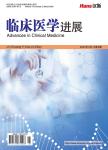丹参酮IIA治疗脊髓损伤修复的可能机制
Possible Mechanisms of Tanshinone IIA in the Treatment of Spinal Cord Injury Repair作者机构:新疆医科大学第六附属医院脊柱外科新疆 乌鲁木齐
出 版 物:《临床医学进展》 (Advances in Clinical Medicine)
年 卷 期:2024年第14卷第8期
页 面:1610-1615页
学科分类:1008[医学-中药学(可授医学、理学学位)] 1006[医学-中西医结合] 100602[医学-中西医结合临床] 10[医学]
摘 要:丹参酮IIA,也称为TanIIA,在生物体内代谢过程中扮演着多重角色,其产物能够影响多种生物化学反应。这些反应中,TanIIA有时作为辅酶参与,有时则可能促进或干扰这些反应过程,从而展现出多样的药理特性。尽管在脊髓损伤等神经系统疾病的治疗中,TanIIA已经显示出了一定的疗效,但其具体的作用机制尚未完全阐明。基于现有的研究成果,我们推测TanIIA可能通过多种药理途径,包括抗炎、抗氧化、抗细胞凋亡以及保护血管,来促进脊髓损伤后的神经细胞存活和修复。Tanshinone IIA, also known as TanIIA, plays multiple roles in the metabolic process of living organisms, and its products can affect a variety of biochemical reactions. In these reactions, TanIIA is sometimes involved as a coenzyme, and sometimes it may facilitate or interfere with these reaction processes, thus exhibiting diverse pharmacological properties. Although TanIIA has shown some efficacy in the treatment of neurological diseases such as spinal cord injury, its specific mechanism of action has not been fully elucidated. Based on the existing research results, we speculate that TanIIA may promote the survival and repair of nerve cells after spinal cord injury through multiple pharmacological pathways, including anti-inflammatory, antioxidant, anti-apoptosis, and vascular protection.



